Beautiful Dark Worlds: An Interview with John R. Fultz
JRF has deep roots in the weird fiction community and especially Black Gate, and you can learn about those in this post. We recently reviewed his collections Darker than Weird and Worlds Beyond Worlds which were published after I interviewed the author in 2017 for my Weird Beauty interviews series (right before Black Gate began hosting them; see the listing of those interviews below).
This reposts that interview and teases an updated one specific to Fultz’s Zang Cycle (to be posted in the coming weeks as The Rogues in the House Podcast, publishers of the Sword & Sorcery anthologies A Book of Blades Vol I and Vol II relaunches The Revelations of Zang collection). I was honored to write the foreword for the re-release. When preparing that I interviewed John R. Fultz a second time, but focusing on the Zang Cycle. Sharing the announcements for the re-release begs to have the 2017 version detailing his creative process and the history of SKULLS available here. Enjoy this prelude and keep an eye out for the announcement.
John R. Fultz – Interview [2017 interview]
It is not intuitive to seek beauty in art deemed grotesque/weird, but most authors who produce horror/fantasy are usually (a) serious about their craft, and (b) driven by strange muses. These interviews engage contemporary authors & artists on the theme of “Art & Beauty in Weird/Fantasy Fiction.” This one features weird fiction author John R. Fultz, who is a sorcerer in his own right [being an illustrator too!]. Learn about his past graphic necromancy (SKULLS) and his future releases (“Veneration”… and Son of Tall Eagle)!
SEL) Who the Hell are you anyway?
JRF: My name is John R. Fultz, and I’m a storyteller. My latest novel, THE TESTAMENT OF TALL EAGLE, is available now from Ragnarok Publications, and a sequel called SON OF TALL EAGLE is set for release in June 2018. My “Books of the Shaper” trilogy includes the novels SEVEN PRINCES, SEVEN KINGS, and SEVEN SORCERERS (Orbit/Hachette). THE REVELATIONS OF ZANG (01Publishing/FantasticBooks) collects 12 dark fantasy tales set in the magical World of Zang. I live in the North Bay Area, California, but I’m originally from Kentucky. My short fiction has appeared in anthologies such as YEAR’S BEST WEIRD FICTION, SHATTERED SHIELDS, THE WAY OF THE WIZARD, CTHULHU’S REIGN, THE BOOK OF CTHULHU II, THAT IS NOT DEAD, and DEEPEST, DARKEST EDEN: NEW TALES OF HYPERBOREA. I’ve also had stories in magazines such as BLACK GATE, WEIRD TALES, WEIRDBOOK, LIGHTSPEED, and SPACE & TIME. I’ve written comics for Boom Studios’ ZOMBIE TALES and CTHULHU TALES. My graphic novel of epic fantasy PRIMORDIA (illustrated by the great Roel Wielinga) was published by Archaia Comics in an “ultimate hardcover edition” in 2012.
SEL #1 Weird Role Models: Your author notes, blogs, and Facebook posts all mark your reverence for weird fiction writers such as Clark Ashton Smith (1893- 1961) and Darrell Schweitzer. CAS was one of Lovecraft and Howard’s pen pals and compatriots in Weird Tales; and Darrell Schweitzer has been a flagship short story “weirdo” (compliment) for decades. Can you discuss how their short-story methods & tales have informed your novel-length works?
I started out writing short stories like most novelists. There are a few who go straight to novels, but I think they’re a rare breed. I started writing fiction seriously in college thanks to two factors:
- My creative writing classes forced me to create new stories with actual deadlines — and I discovered the workshopping process of how writers share stories and provide useful feedback to one another.
- The Terminus version of WEIRD TALES magazine was going strong at that time under the editorship of Darrell Schweitzer and George Scithers — who won a World Fantasy Award during their tenure on the mag.
I would read new and back issues of WT and be crazy-inspired by them at the same time I was reading Robert Silverberg’s WORLDS OF WONDER and discovering the great sci-fi writers such as Aldiss, Kuttner, and Vance. There was also a great anthology I acquired at the time called WEIRD TALES: THE MAGAZINE THAT NEVER DIES, edited by Marvin Kaye, and it turned me on to some of the best stuff in the magazine’s long history (including my first Tanith Lee tale, “The Sombrus Tower”). I started workshopping my “weird” stories in class, then sending them to WEIRD TALES. I got rejected again and again, but I always got terrific feedback from Darrell. He wrote personalized rejections with actual advice on how to make the writing better. I had never met this man in person, but I could tell he really cared and wanted to see me succeed.
Cut to 15 years later and I finally managed to write a story worthy of publication — Darrell was impressed and wanted to buy it for WEIRD TALES. I hadn’t submitted every single year, but for a decade-and-a-half I’d been trying to crack this market because I loved WEIRD TALES above all other fiction mags. This was in early 2004 when I finally succeeded with a story called “The Persecution of Artifice the Quill” (WT #340, 2006). It was my first and only appearance in the magazine, but it set me on the path to writing and selling more stories. I did sell two more stories to Darrell and George before the magazine came under new management and my stories were quickly forgotten.
Luckily, I found a new home for my best stories at BLACK GATE magazine, where John O’Neill had become the new “editor to impress.” After a few years of hustling short stories here and there, and eventually completing my first complete story-cycle (i.e. THE REVELATIONS OF ZANG), I was ready to move on to writing novels. Again, Darrell encouraged me in this wholeheartedly from afar. Reading WT had turned me on to writers like Tanith Lee, Thomas Ligotti, Lord Dunsany, H.P. Lovecraft, and others. Discovering Tanith Lee was a thunderbolt moment for me — I started seeking out her books whenever possible. My favorite is probably DEATH’S MASTER, but she wrote so many masterpieces.
I might not have stuck to it without Darrell’s encouragement across all those years of rejected stories. I wouldn’t have trusted his advice so much if I didn’t love his work so much. All Schweitzer fans know this already, but he’s one of the greatest living fantasy writers, and a real master of the short story form. His novel MASK OF THE SORCERER ranks with any of the genre’s greatest works, but he’s most comfortable writing short stories. I’m the opposite — I feel way more comfortable writing novels, but I still have to crank out a short story now and then. I should mention that I had grown up a fan of Robert E. Howard and Clark Ashton Smith, having discovered their work at the age of 9 or 10 in both comics and paperbacks.
This was years before I came across WEIRD TALES. I used to scan every used bookstore I found for Clark Ashton Smith books, which weren’t always easy to find. This was in Kentucky where I grew up. Now, ironically, I live about an hour’s drive from Auburn, California, where Smith wrote most of those amazing stories and poems. If anything, my discovering WEIRD TALES in college only solidified, enhanced, and expanded my tastes in the fantasy and horror genres, at a time when I was also imbibing the history of science fiction via Silverberg, Ellison, and a new bloke named William Gibson. NEUROMANCER was another thunderbolt.
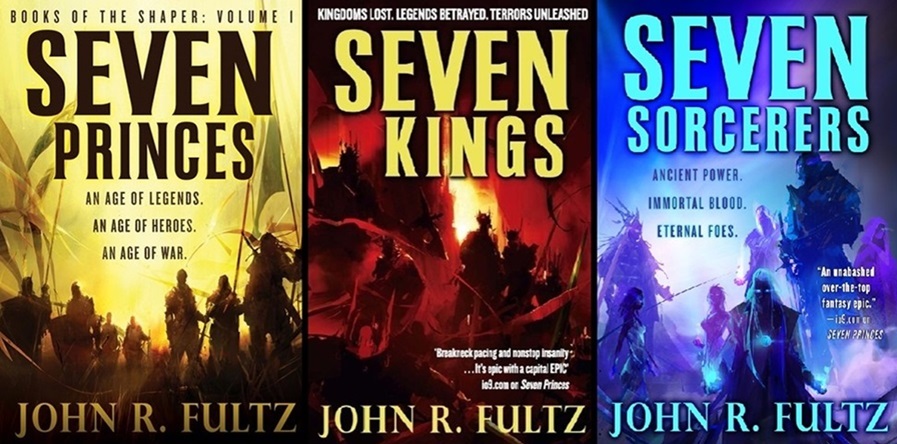
SEL #2) The Art of Shaping: Books of the Shaper trilogy is an accessible, epic, weird fantasy: its sorcery is based on “shaping.” Please describe how shaping works and describe the “craft/art” behind the sorcery.
Actually, that’s a common misperception. In The Shaper Trilogy, there is only one “Shaper” and his name is Iardu. He’s a sorcerer of great power and a rather mysterious figure who haunts and “shapes” the history of mankind. He may be far more than that as well, but I don’t want to give any spoilers. The sorcery in these books isn’t confined to any one “system” — I believe magic and sorcery should be kept somewhat mysterious, lying just beyond the layman’s ability to understand. I mean if you could really understand magic then it wouldn’t be magic, would it? It would be science, where everything is laid out in formulae and based on empirical evidence. Magic/Sorcery should be the opposite of that — a dance with dark forces beyond the ken of men; a manipulation of reality and its obscure forces through the power of transcendent language; the mind-over-matter redistribution of atom, molecule, and form by sheer willpower alone.
Magic and Sorcery in The Shaper Trilogy is all of these things and more. Over the course of the series we see at least three different characters go through “training” periods where they learn the art of sorcery — and each person’s journey is completely different. One unsavory fellow uses blood and shadows to invoke necromancy, another uses naked intent to rearrange the existing patterns of reality itself, and one uses an ancient language of power that can be spoken without sound. There are also entities in the novel who are simply cosmic in nature, so that magic and sorcery is their very lifeblood, creatures of concentrated power who fade and diminish over time into something resembling mortal forms. Often these transfigured cosmic beings forget their true nature as they are swept up in the dream of the living world. So there’s a lot of magic in The Shaper Trilogy, and a lot of different kinds of magic. I used to tell people the trilogy is “way more sorcery than sword.” ‘Cause that’s the way (uh-huh, uh-huh) I like it.
SEL #3) Happy Horror: I’ve reviewed your short story in Weirdbook#35 “The Man Who Murders Happiness” as being poignant and disturbing (in a good way)! There is a fine line between creating repulsive and pleasant horror. Please discuss how you balance walking that tightrope.
 I mainly work in the fantasy field. However, sometimes I’m inspired to go “full horror” or explore science-fiction concepts. Usually in the case of horror I’m channeling some kind of anxiety or emotional issue — writing horror can be a catharsis — and it can say interesting things that you could never express aloud in simple declaratives. It can peek around the edge of reality and look right into the rusted bloody gears that turn the guts of the world. In the case of “The Man Who Murders Happiness,” I wrote that in the latter part of 2016 when it felt like the world was sliding into darkness. We’re all forced to weather that darkness with all its conflict, hatred, hypocrisy, and incivility. We’re living out that old Chinese curse: “May you live in interesting times.” On top of all this, our leaders have conned us into an Endless War. That’s one of the most terrifying concepts in all of human experience — a war that never ends is literal insanity — and yet our society has bought into it as the new “normal.”
I mainly work in the fantasy field. However, sometimes I’m inspired to go “full horror” or explore science-fiction concepts. Usually in the case of horror I’m channeling some kind of anxiety or emotional issue — writing horror can be a catharsis — and it can say interesting things that you could never express aloud in simple declaratives. It can peek around the edge of reality and look right into the rusted bloody gears that turn the guts of the world. In the case of “The Man Who Murders Happiness,” I wrote that in the latter part of 2016 when it felt like the world was sliding into darkness. We’re all forced to weather that darkness with all its conflict, hatred, hypocrisy, and incivility. We’re living out that old Chinese curse: “May you live in interesting times.” On top of all this, our leaders have conned us into an Endless War. That’s one of the most terrifying concepts in all of human experience — a war that never ends is literal insanity — and yet our society has bought into it as the new “normal.”
So my feelings that I was watching the world go mad emerged in that story — it’s brutal, it’s dark, but it echoes the world today. One cannot dwell in existential misery forever, and writing horror stories can be even more liberating than reading them. I think I’ll always dip into horror now and then, even though fantasy remains my first love. Some people are appalled by the horror in my fantasies, but what can I say? I like it dark. The more darkness you have, the brighter the light shines against it.
SEL #4) What beauty is in any of your weird works?
Wow, that’s probably a question for my readers rather than myself. However, I can tell you what I hope comes across as beautiful. In the Shaper Trilogy, I wrote in a lyrical style heavy with imagery. A lot of people have complimented the extraordinary visuals in those books. Others have complained that I “describe too much,” which I’ve never been able to wrap my head around. When you’re reading fantasy, you should be taking in fantastic images — there should be an immersion into the “other” — a descent into the atmosphere of the unreal to the point that it takes on a reality of its own. If you don’t want descriptions of fantastic settings, environments, and locations, you might as well be reading a contemporary crime novel, or any other non-fantasy genre.
I never have and still don’t enjoy fantasy that doesn’t provide me with fantastic imagery. As Mark Lanegan of the Screaming Trees once sang: “Show me fantastic lands…” I remember a reviewer who said that I was “Trying to write like Clark Ashton Smith,” but this person had never spoken to me, nor had any real idea what I was trying to do. I was only trying to write like myself, so that’s exactly what I did. A lot of modern fantasy — most of it — is written in a rather mundane contemporary style that fails to evoke the fantastic at all. In SEVEN PRINCES and its two sequels I aimed for a timeless style using language neither wholly dated nor wholly modern. The best fantasies and historical dramas are told in simple, timeless language. It’s a very hard line to walk, and I did the best I could at it. Everything you write is a snapshot of where you are as a writer at that specific moment in time. A writer’s style also evolves over time and from project to project.
My next project, TESTAMENT OF TALL EAGLE, was written in a very different style — a first-person narrative told in the voice of a native American from the late 1700s (yet whose mind had been expanded by magical means, thus enhancing his vocabulary and awareness). Right now I have a “big weird fantasy” novel making the rounds, and it’s written in yet another style. It combines fantasy, horror, sci-fi, weird, and a few other genres to create something unlike any of my previous books. For me, style isn’t a fixed quality, it’s an ongoing natural process of growth and experimentation.
Your question brings up the ideal of “beauty” — it can be found in fantastic realms and the language that evokes them — but it’s also found in certain characters and their journeys. For example, some readers find the love story between Tall Eagle and White Fawn a beautiful thing in TESTAMENT OF TALL EAGLE. Also, language itself can be beautiful, and I always expect the most beautiful language when I’m reading fantasy (as opposed to other genres). Usually my writing attempts to create beauty in the form of strange, fantastic, and otherworldly environments — an immersion into imaginary realms with genuine colors, shapes, and textures. Sometimes, though, it’s finding the fantastic qualities of the mundane world that creates beauty. I’ll take it wherever I can find it.
SEL #5) Fine Arts: CAS was a poet, illustrator, and sculptor; many others interviewed by S.E. have other artistic talents beyond writing. Do you practice other arts? If so can we share them (i.e., images of fine or graphic art) or mp3s (of music). Likewise, can you discuss how art can from one medium can inform/inspire another?
Yes, my first goal in life was to be a comic book artist — which I decided in the late 70s at about the age of 6 or 7. So drawing was my first love. HOW TO DRAW COMICS THE MARVEL WAY was my Bible for a while. Then in high school I quit comics and took up the electric guitar. I’ve been playing guitar since I was 15 and played in a few bands in the early 90s — mostly heavy rock with a psychedelic edge. I’ve always had a passion for the Blues as well. I re-discovered my comic art beginnings in ’99 when I started drawing my own dark fantasy comic, NECROMANCY.
I worked on that for two years before realizing I was much better at writing than penciling. Eventually I wrote the graphic novel PRIMORDIA for Archaia Studios Press and a couple of 8-page stories for Mark Waid when he was editor at Boom! Studios. Music today is still a major part of my life — I listen to it every day, and I make special playlists when I’m writing. Most of my favorite bands these days are European bands from the stoner/doom scene — but I’m always discovering great new American bands too. They’re out there — you just have to go looking for them these days. Rock ain’t dead, but nobody’s getting rich playing it anymore. Corporate rock, however, is truly dead — and m-m-my generation killed it. That means people are playing rock and roll because they love it and they can’t live without it. (Shout-out to my buddy Jon Davis of CONAN!)
[SIDEBAR: John R. Fultz self-published a graphic novel NECROMANCY, which years later he revised into an online comic called SKULLS (published at BlackGate.com]. Here are the Quick Links:
- skulls-chapter-1
- skulls-chapter-2
- skulls-chapter-3
- skulls-chapter-4
- skulls-chapter-5
- skulls-chapter-6
- skulls-chapter-7
- skulls-chapter-8
- skulls-chapter-9
- skulls-chapter-10
- skulls-ch-11-conclusion
SEL #6) Writing Styles: In an October 24th 1930 letter to Lovecraft, CAS described his strategy of using aesthetics to heighten the reading experience of his weird works (quote below). As much as I adore CAS’s works, they are a bit dense and less digestible than yours. What is your take on writing styles and conveying emotion?
“My own conscious ideal has been to delude the reader into accepting an impossibility, or series of impossibilities, by means of a sort of verbal black magic, in the achievement of which I make use of prose-rhythm, metaphor, simile, tone-color, counter-point, and other stylistic resources, like a sort of incantation. You attain a black magic, perhaps unconsciously, in your pursuit of corroborative detail and verisimilitude. But I fear that I don’t always attain verisimilitude in my pursuit of magic! However, I sometimes suspect that the wholly unconscious elements in writing (or other art) are by far the most important.” – CAS 1930.
Well, as I stated above I think style isn’t a fixed quotient — at least not for me. It’s an ongoing evolution of thought, process, and expression. One thing I can tell you is that you simply can’t write like CAS these days — people don’t have the patience for highly ornate language — they want easily digestible chunks of prose. But most of my favorite writers have basically said “Screw that! That’s not how I write!” I adore the work of R. Scott Bakker, for example, but some people can’t read him because his prose is “too dense.”
Likewise with Tolkien — who all self-respecting fantasy fans should have read — but many people come to the genre and skip right over Tolkien. I remember friends of mine saying the Tolkien’s writing was “boring” or “it moves too slow.” I remember complaints of Tolkien describing what kinds of flowers grew alongside the road. What the hell–? If that’s what the writer needs to complete his or her vision, then by all means put it in there! If you want easily-digestible prose, you’ll have to limit yourself and miss a lot of amazing books/stories.
It’s okay that writing CHALLENGES the reader sometimes — I read LORD OF THE RINGS when I was in third grade and let me tell you I was challenged by it. I remember reading John Brunner’s “The Things That Are Gods” in Lin Carter’s YEAR’S BEST FANTASY #6 when I was ten. I couldn’t understand it at all. A quarter-century later I read the story and realized its genius. I had to seek out every other Traveler In Black story that Brunner wrote. Luckily they were collected in THE COMPLEAT TRAVELER IN BLACK, and they are amazing. Dense language, fantastical in every way, and built on a foundation of cosmic mystery. Definitely not written for the 10-year-old fantasy fan. At that age I was digging Carter’s Thongor of Lemuria stories in that very same collection. Thongor was kid-friendly with simple language and Conan-esque context, whereas Brunner’s story was in a whole other class: it was legitimate “literature of the fantastic.”
Anyone who says “I’m a fantasy fan” should also be able to read and enjoy the work of Lord Dunsany. If you read his beautiful prose and complain about his language, than you’re a lazy reader. Sorry, mate. Go read one of those bland mass-market fantasies that sell so well — lord knows there are plenty of them. My ideal way to write fantasy is to use a blend of timeless and contemporary language free of anachronisms. Yet when it comes to sci-fi, horror, and weird fiction, I tend to write in far more contemporary language. Short stories are kind of like experiments where I can play with language, style, and ideas, freed from the greater demands of a cohesive novel.
SEL #7) Art vs. the Artist? Is there a character that you most empathize with or reflects you [King D’zan perhaps (I’m implying you know necromancy)]?
Not really — although back when I was writing The Shaper Trilogy I suppose I identified most with Lyrilan — a scholar-prince who later becomes a deadly sorcerer. When we meet him in SEVEN PRINCES, he is obsessed with chronicling important events in the book that he’s writing; his brother Tyro is a military commander and his polar opposite. I don’t have a brother, although I am as obsessed with books and writing as Prince Lyrilan ever was.
SEL #8) Weird Muses: Are you driven to escape or capture elements of beauty/horror? In an interview with Gail Z Martin, you offer geography (California) as being a general inspiration for writing. But when it comes to the weird & horrific, I suspect you draw from other sources. Are you haunted?
Ha-ha! I suppose all writers are “haunted” to a degree. As I cruise through my late 40s, my biggest goal has been to enjoy life and learn to appreciate every moment. I remember my 20s when I was a “raging youth” — rock guitar gave me a way to rebel and to express my righteous anger at the world. In my 30s I was too busy trying to get my life together to rage against much of anything — but I did turn my life around when I got a teaching degree at 35. Teaching has been the best decision of my life, and my success in that career has enabled me to pursue all of the success I’ve had in writing. I usually write my novels in the summer when I’m not teaching — although the “idea work” continues year-round.
California’s natural beauty does inspire me every single day — and rain inspires me to a tremendous degree. We only get rain in the winter out here, so that’s my favorite season. Finding beauty in the arts — music, film, theatre, literature, always inspires me too. I think great works of art naturally inspire others. Watching a David Lynch movie, for example, inspires the hell out of me every time. When it comes to horrific subjects, I’m not inspired by beauty but by ugliness. Beauty and wonder inspire me to write fantasy, but anxiety and dread inspire me to write horror. If I’m haunted it’s only by the same creeping sense of mortality that haunts everyone in their late 40s. You know you only have so much time left, so you start cutting out the bullshit and focusing on things that really matter. Like enjoying life for what it is — not for the dream you always wished it was.
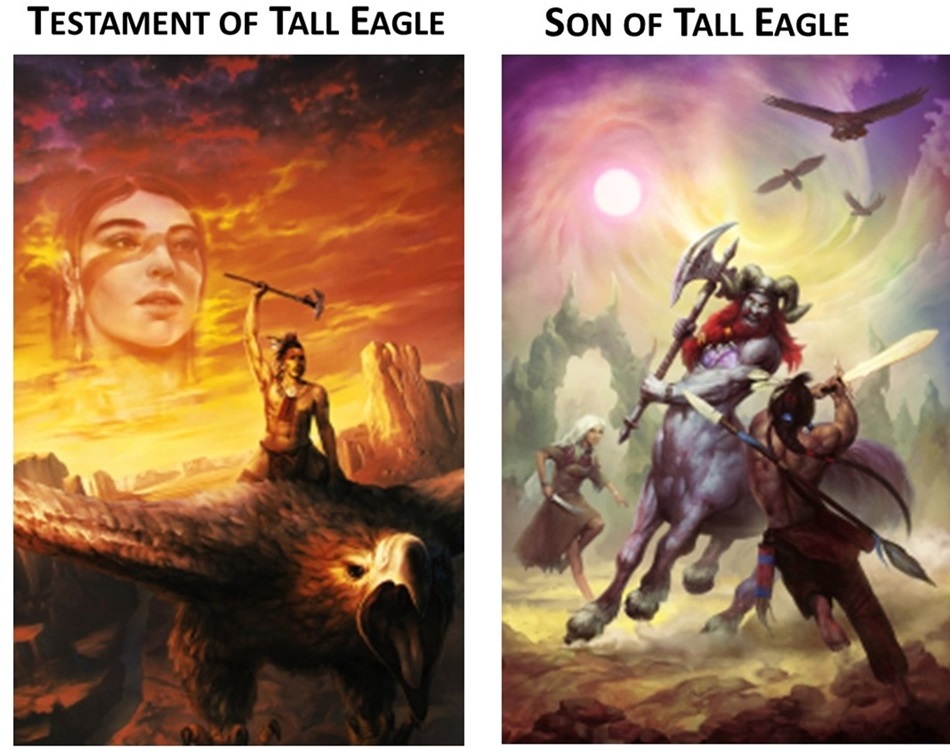
SEL #9) Sword and Sorcery: Being influenced by REH, it is no surprise that you like heroic adventure. Can you discuss your upcoming new story-cycle beginning with a tale called “The Veneration of Evil in the Kingdom of Ancient Lies”?
Oh, yes. “Veneration” is slated for an issue of WEIRDBOOK coming sometime after the October Annual. A while back I was feeling a bit “lost at sea” — it was a transitional period and those can be tough — also general anxiety about the direction in which society was heading. I don’t like to get on a “high horse” or try to sound “holier-than-thou,” but it seems these days that we may have lost our way as a society both morally and spiritually. We are a nation consumed by falsehoods, division, violence, addiction, an increasingly militarized existence, and a culturally fragmented population. I found myself wondering if we had simply forgotten what “good” was and started revering “evil” instead.
Then I found myself thinking how that would make a great fantasy story: an ancient society where evil had long ago replaced goodness and the general populace were too oblivious to see it. How long could such a confused, self-defeating society survive? That became the seed from which grew the story of a conniving poet-thief and his dirty deal with one of the wizards who built this sinister society. The story’s setting is akin to a Eurasian Bronze Age city-state, yet more fantastical in nature. Once I had a lead character to explore, that’s when the real plotting began. Plot is character, character is plot. I don’t want to say anything more about the story for fear of spoilers, but I will reveal that there’s a bitchin’ flying carpet involved.
SEL #10) Cover Art: Son of Tall Eagle, a sequel to Testament of Tall Eagle, is due out in paperback next year (May 2018 Ragnarok). Would love to hear your input on the series. Alex Raspad’s cover art is very engaging. Authors are usually solitary artists; relying on another artist to realize your world is an element of beauty/horror in the publication industry. Did you have a chance to work directly with him on these? How did that process go?
I’m extremely fortunate to have Alex Raspad doing the TALL EAGLE covers — and I owe it all to Ragnarok Publications. They “discovered” Alex — who is a Russian artist — and commissioned several covers from him. I knew when I wrote the second book that we had to have another Raspad cover. I was also lucky that the folks at Ragnarok worked with me very closely on the first cover — I wrote a very detailed description which was passed on to Alex; he did a preliminary rough to show us, then make a couple of tweaks at my suggestion. The result was his gorgeous TESTAMENT OF TALL EAGLE cover: White Fawn’s face floating in the sunset behind Tall Eagle as he flies in search of her. For the SON OF TALL EAGLE cover I also wrote a detailed description and did a very rough sketch. Alex took that and ran with it, once again knocking it out of the park.
I was also fortunate that Orbit Books hired the brilliant Richard Anderson to do covers for the Shaper books, also based on nothing more than my written descriptions. My favorite of those covers is SEVEN SORCERERS, which I believe is also the best book in the series — as the third book of any trilogy should be. You have to deliver bigtime in the third book, otherwise what’s the point? While the Books of the Shaper were designed to be a self-contained trilogy, I have no specific number of books in mind for the TALL EAGLE series. The TALL EAGLE novels can also be read in any order — each one is a new entry point.
Art by John R Fultz – Conclusion to SKULLS online comic
#Weird Beauty Interviews on Black Gate
- Darrel Schweitzer THE BEAUTY IN HORROR AND SADNESS: AN INTERVIEW WITH DARRELL SCHWEITZER 2018
- Sebastian Jones THE BEAUTY IN LIFE AND DEATH: AN INTERVIEW WITH SEBASTIAN JONES 2018
- Charles Gramlich THE BEAUTIFUL AND THE REPELLENT: AN INTERVIEW WITH CHARLES A. GRAMLICH 2019
- Anna Smith Spark DISGUST AND DESIRE: AN INTERVIEW WITH ANNA SMITH SPARK 2019
- Carol Berg ACCESSIBLE DARK FANTASY: AN INTERVIEW WITH CAROL BERG 2019
- Byron Leavitt GOD, DARKNESS, & WONDER: AN INTERVIEW WITH BYRON LEAVITT 2021
- Philip Emery THE AESTHETICS OF SWORD & SORCERY: AN INTERVIEW WITH PHILIP EMERY 2021
- C. Dean Andersson DEAN ANDERSSON TRIBUTE INTERVIEW AND TOUR GUIDE OF HEL: BLOODSONG AND FREEDOM! (2021 repost of 2014)
- Jason Ray Carney SUBLIME, CRUEL BEAUTY: AN INTERVIEW WITH JASON RAY CARNEY (2021)
- Stephen Leigh IMMORTAL MUSE BY STEPHEN LEIGH: REVIEW, INTERVIEW, AND PRELUDE TO A SECRET CHAPTER (2021)
- John C. Hocking BEAUTIFUL PLAGUES: AN INTERVIEW WITH JOHN C. HOCKING (2022)
- Matt Stern BEAUTIFUL AND REPULSIVE BUTTERFLIES: AN INTERVIEW WITH M. STERN (2022)
- Joe Bonadonna MAKING WEIRD FICTION FUN: GRILLING DORGO THE DOWSER! 2022
- C.S. Friedman. BEAUTY AND NIGHTMARES ON ALIENS WORLDS: INTERVIEWING C. S. FRIEDMAN 2023
- John R Fultz (reboot of 2017 interview)
- John R Fultz on the Zang Cycle (forthcoming 2023/2024 Interview)
- interviews prior 2018 (i.e., with John R. Fultz, Janet E. Morris, Richard Lee Byers, Aliya Whitely …and many more) are on S.E. Lindberg’s website
S.E. Lindberg is a Managing Editor at Black Gate, regularly reviewing books and interviewing authors on the topic of “Beauty & Art in Weird-Fantasy Fiction.” He is also the lead moderator of the Goodreads Sword & Sorcery Group and an intern for Tales from the Magician’s Skull magazine. As for crafting stories, he has contributed six entries across Perseid Press’s Heroes in Hell and Heroika series, has an entry in Weirdbook Annual #3: Zombies He independently publishes novels under the banner Dyscrasia Fiction; short stories of Dyscrasia Fiction have appeared in Whetstone, Swords & Sorcery online magazine, Rogues In the House Podcast’s A Book of Blades Vol I and Vol II, DMR’s Terra Incognita, and the 9th issue of Tales From the Magician’s Skull.
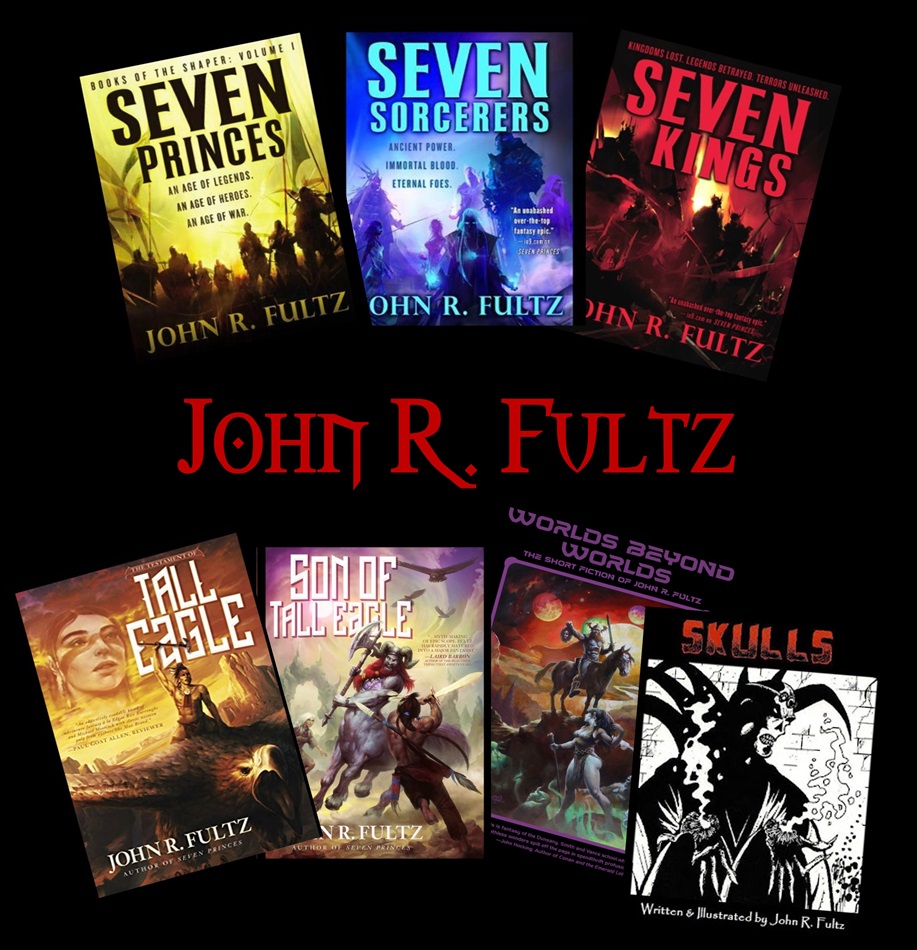
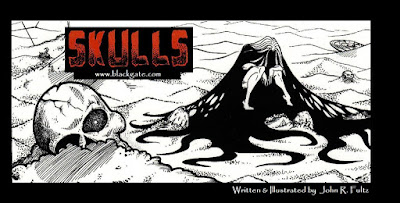
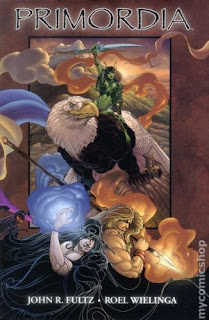
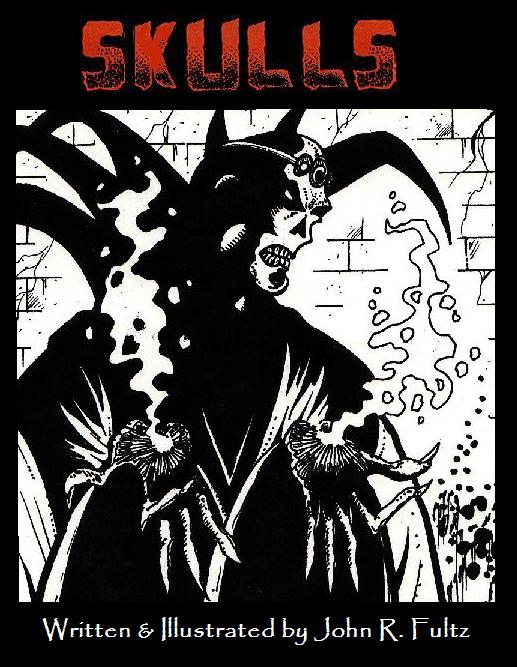
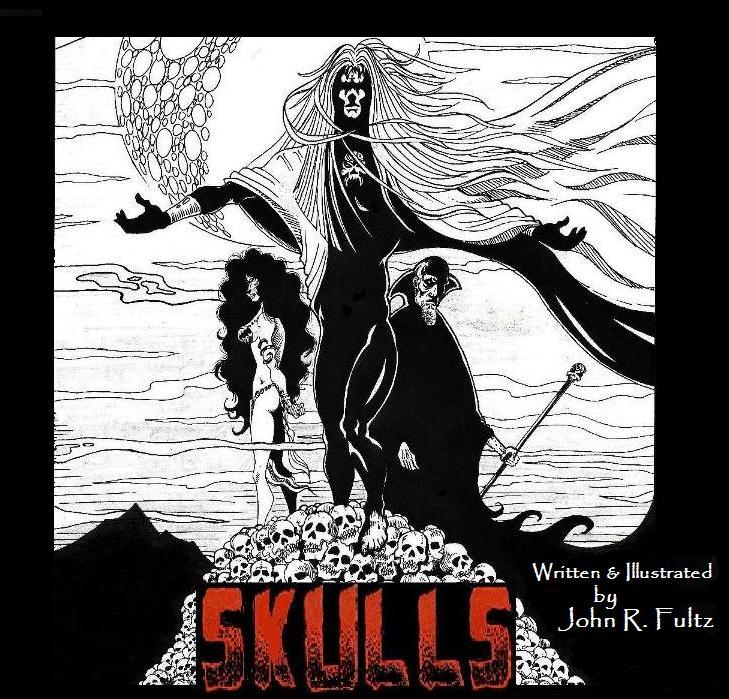
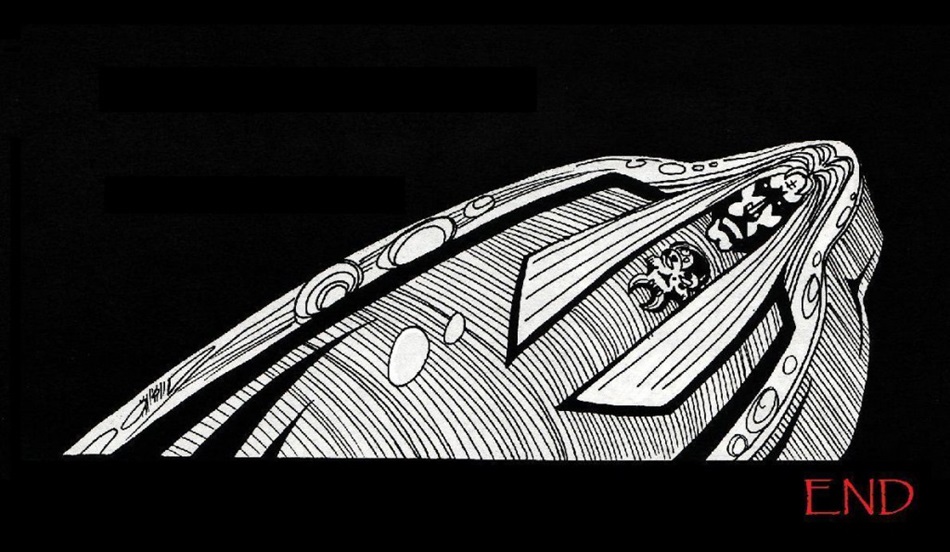
The Shaper trilogy is great! And this reminds me that I have a whole lot more of Fultz’ work that I really need to read sooner rather than later.
I enjoyed the first Shaper, but then got sucked into his other weird library. I’ll revisit the series. You’ll enjoy the Zang collection if you haven’t read it yet.
I did read the original collection but I’ll have to get the updated edition.
I was thinking about SKULLS a week ago. Forgot I’d read it here. Now if you’ll excuse me… (clicks link for chapter one)
Sweet. i had hopes this post would serve as a tour guide / TOC for Skulls.